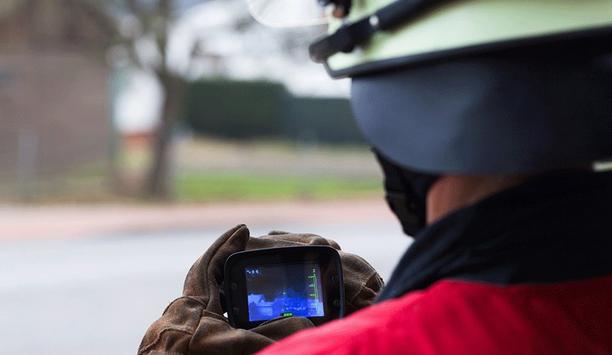To help the community better understand the risk factors contributing to fires in an area, consider using multimedia in the online presentations to engage residents and encourage their participation.
Encouraging participation
Multimedia tools can bring to life stories about fire safety improvements and organization's successes in responding to fires and supporting fire safety initiatives, such as using adopted codes to require residential fire sprinklers, sponsoring a wildfire safety project to remove debris around homes, or offering to install home smoke alarms for residents in need.
Use these stories to emphasize the importance of everyone's role individually or as a group to help the community become more fire adapted and to improve responder safety.
Multimedia stories can help improve communication
With engaging presentations, people can help their constituents better visualize risks and actions to prioritize
Learning new ways to tell stories about past, present, and future fire prevention and response via multimedia presentations can inspire others to support the efforts. With engaging presentations, people can help their constituents better visualize risks and actions to prioritize and implement successful projects and build more resilient communities.
These presentations can also help partners understand how their work can complement or better integrate into the work completed by other residents, non-profits, and agency partners.
What is a multimedia presentation?
Multimedia is the combined use of several media such as video, text, music, photos, audio, etc. This diversity adds a level of interest and interaction, making informational and educational material more attractive, involving, and entertaining.
A good example of using text, video, audio, and photographs is the U.S. Fire Administration's (USFA's) Surviving a Wildfire: A Tale of Two Communities. It tells the stories of a community in the West and one from the East that survived wildfire loss because residents worked collaboratively with their fire departments and agency partners on wildfire safety project activities.
Building a multimedia presentation
The first step in building the multimedia presentation is to decide:
- Why does a user want a presentation?
- Tell a success story. Prioritize risk reduction efforts. Generate support for a community initiative?
The second step is to identify:
- Who is the audience for the presentation?
- Homeowners? Caregivers? Community groups or leaders? Firefighters?
The third step is to determine:
- What do users want their audience to do after seeing the presentation?
- Clear debris from around their homes? Install smoke alarms? Start an arson prevention program? Complete a risk assessment of structures and landscapes around the community.
The next step
The outline covers the general steps to organize and present information in a logical way that moves the audience
Now that users know “why,” “who” and “what,” the next step is to outline the presentation. The outline covers the general steps to organize and present information in a logical way that moves the audience from the introduction to suggested actions.
A simple template to use as the foundation of the outline is AIMA (Attention, Interest, Me, Action). Here's how it works:
Attention:
Make the audience aware of what is created. In the example from the USFA, the title page does a good job of this: “Surviving Wildfire” catches their attention, and “A Tale of Two Communities” lets them know that they are going to get information based on real experience.
Their reaction is: “I live in a community where wildfire is a possibility. If there is a wildfire, I would like to survive it. You’ve got my attention.”
Interest:
Pique their curiosity about why they should engage with the information. Using the USFA example again, the next page states: “Two communities on different sides of the United States were threatened by wildfire events.”
The word “threatened” makes them curious and now they want to see what happened. What was the extent of the damage? Did both communities escape unscathed? Did only one? Did either?
Me:
The benefits of no deaths, no injuries and no structure loss are benefits that they want for themselves, too
User has their attention and they are curious. Now audience wants to know what happened. As they take in the story, they will look for points they can identify with and ask themselves “What does this mean to me?”
In the USFA example, the story includes photographs of people who are easy to identify with doing simple, understandable tasks and benefiting from the process. The benefits of no deaths, no injuries and no structure loss are benefits that they want for themselves, too.
Action:
Now it's an opportunity to tell the audience what users want them to do. This is done in the USFA example with a simple line that includes a gentle sense of urgency: “If you live in an area prone to wildfires, now is the time to begin discussing how to create a fire-adapted community.”
This is followed by some information on creating a fire-adapted community and a call for specific action: “For more information on wildfire safety, visit usfa.fema.gov.”
Content
Prepared with a basic plan, users need content to execute that plan. Collect information to tell a unique story, such as impactful statistics (consider using charts and graphs), videos, images, sound recordings, and mapping information.















